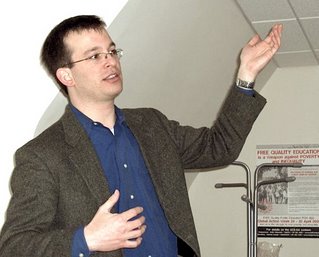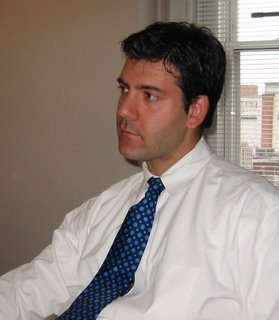Manufacturing costs for second line AIDS drugs*
For medicines invented before 1996 and produced or imported as generics in Brazil, the global market for active pharmaceutical ingredients (APIs) is highly competitive. The most widely used 1st line AIDS drug is a twice a day regime of Stavudine (d4T), Lamivudine (3TC), and Nevirapine (NVP). The main factor driving the price of this HAART regime is the cost of the APIs. The total amount of APIs in this cocktail is 284,700 milligrams per year, or .2847 kilos per patient per year.
Drug/APIs in milligrams | Dose | Daily | Yearly |
| Stavudine (d4T) | 40 | 80 | 29,200 |
| Lamivudine (3TC) | 150 | 300 | 109,500 |
| Nevirapine (NVP) | 200 | 400 | 146,000 |
| Total | 780 | 284,700 |
Following our price negotiations with CIPLA on behalf of MSF, the price for this regime was $350 in January of 2001, and has fallen steadily, to recent prices as low as $109. Some companies have privately indicated to UN agencies that bulk prices of $70 per year are feasible, if quantities are large and financing is solid.
For this HAART regime, the cost of a kilo of delivered and formulated APIs in Africa was initially more than $35 thousand. With competition, this fell to roughly $3,900 per kilo by 2000, $ 1,229 per kilo in 2001, and $383 per kilo by early 2007.
The $70 per year per person future price that some manufacturers suggest is feasible for this HAART regime is equivalent to $246 per kilo for the fully formulated and delivered APIs.
APIs are the principal cost component of finished pharmaceutical products. The price of APIs fall according to three factors: (1) improved manufacturing processes, (2) economies of scale (larger and more sustained product runs), and (3) sufficient competition between multiple efficient producers. All of these factors have occurred with respect to the first-line HAART regime when Brazil as a large customer "made the market" for generic products, many based upon APIs manufactured in India or China. The Brazil purchases creating economies of scale and incentivizing multiple API manufacturers. Efficiencies and incentives were later enhanced by the presence of global funding mechanisms including the Global Fund to Fight AIDS, Tuberculosis and Malaria and the U.S. PEPFAR program.
What does this analysis suggest concerning the pricing dynamics for the new "second line" regimes? Below we compare the prices per formulated and delivered APIs for the first-line d4T+3TC+NVP regime (Triomune 40) to the prices of formulated and delivered APIs for Kaletra (lopinavir/ritonavir) and Atripla (efavirenz/emtricitabine/tenofovir).
The regime for Kaletra is 4 gel tabs containing 200 milligrams of lopinavir and 50 milligrams of ritonavir -- 1,000 APIs per day, and .365 kilos per year. The once a day regime for Atripla is 600 milligrams of efavirenz, 200 milligrams of emtricitabine and 300 milligrams of tenofovir disoproxil fumarate -- 1,100 APIs per day, or .4015 kilos per year.
Prices per formulated and delivered APIs are currently much higher for Kaletra and Atripla than for the Triomune HAART regime, principally because of the relatively low number of patients on second-line therapies and because of the absence of dynamic generic competition. However, as demand grows for second-line therapies and as Atripla is adopted as a preferred first-line therapy because of its adherence advantages (one pill, once-a-day) and its reduced adverse side effects, we can expect the potential economies of scale to increase and prices to fall, if generic producers are permitted to compete, and to compete in markets that collective are large enough to stimulate entry and competition and to realize economies of scales for the generic suppliers.
Efforts to partition markets or limit markets for generic suppliers will undermine the potential benefits of generic competition in lowering prices for second line drugs.
Prices per formulated and delivered APIs are currently much higher for Kaletra and Atripla than for the Triomune HAART regime, principally because of the relatively low number of patients on second-line therapies and because of the absence of dynamic generic competition.
The price points for Kaletra include the Abbott price for Thailand before the issuance of the compulsory license (roughly $3,800), the prices of generic alternatives in January 2007 (roughly $1,370), and the initial Abbott price in Africa ($500).
The price points for Atripla are the two tiers of prices for developing countries just announced by Merck.
| Drug/APIs per year | Price | Price per kilo of API | ||
| Triomune | ||||
| .2847 kilo | Cipla 2001 | $ 350 | $ 1,229 | |
| Cipla 3 in 1 | $ 250 | $ 878 | ||
| Clinton | $ 140 | $ 492 | ||
| 2007 | $ 109 | $ 383 | ||
| Future low | $ 70 | $ 246 | ||
| Kaletra | ||||
| .365 kilo | Thailand before CL | $ 3,800 | $ 10,411 | |
| Thailand after CL | $ 1,370 | $ 3,753 | ||
| Abbott initial price in Africa | $ 500 | $ 1,370 | ||
| Atripla | ||||
| .4015 kilos | "Middle income" | $ 1,033 | $ 2,573 | |
| "Low income" | $ 603 | $ 1,502 |
The high prices for Kaletra and Atripla should come down if there a competitive market for generic APIs is permitted to develop. As demand grows for second-line therapies and if Atripla is adopted as a preferred first-line therapy because of its adherence advantages (one pill, once-a-day) and its reduced adverse side effects, we can expect the potential economies of scale to increase and prices to fall, if generic producers are permitted to compete, and to compete in markets that collective are large enough to stimulate entry and competition and to realize economies of scales for the generic suppliers.
Efforts to partition markets or limit markets for generic suppliers will undermine the potential benefits of generic competition in lowering prices for second line drugs. Generic suppliers should have access not only to the poorest countries that are subsidized entirely by Northern donors, but also to countries with somewhat higher incomes that can pay for medicines from national health care budgets.
Efforts by national governments to bargain with patent owners for lower prices for Kaletra and Atripla are unlikely to be as effective in lowering prices for these products as will be the creation of a large global market for generic products. The Triomune example illustrates both the possibilities of lower prices per delivered APIs, as well as the importance of dynamic savings, as entry, competition and efficiency is increased over time.
* Thanks to Brook Baker for many helpful comments.






